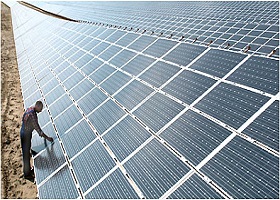Researchers at the University Malaya (UM) and National Tsing Hua University (NTHU) have achieved an efficiency of 1.12 %, at a fraction of the cost compared to those used by platinum-based solar cell material.
Their work on dye-sensitized solar cells carried out in Taiwan took on the challenge of making the technology more affordable by replacing the costly platinum counter-electrodes with bismuth telluride (Bi2Te3) nano-sheet arrays.
Using a novel electrolysis process, the group managed to closely manipulate the spacing between individual nano-sheets and hence control the thermal and electrical conductivity parameters to achieve high efficiency of 1.12%.
This is comparable to platinum devices, but only at a fraction of the cost.
Reference:
Research Sea + University of Malaya













Comments